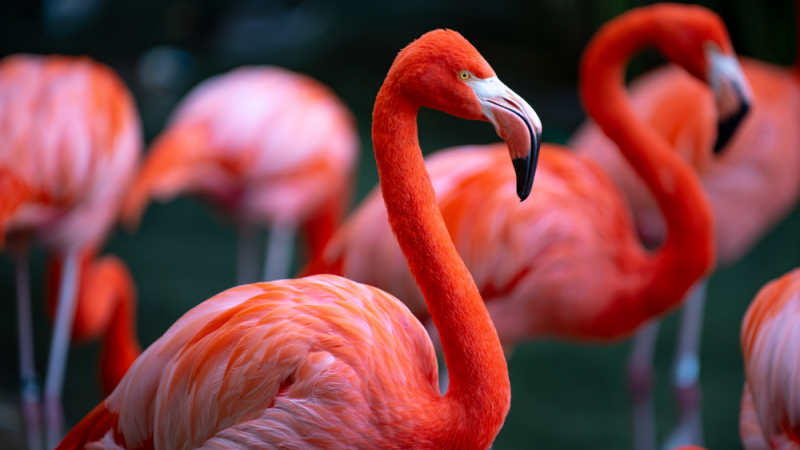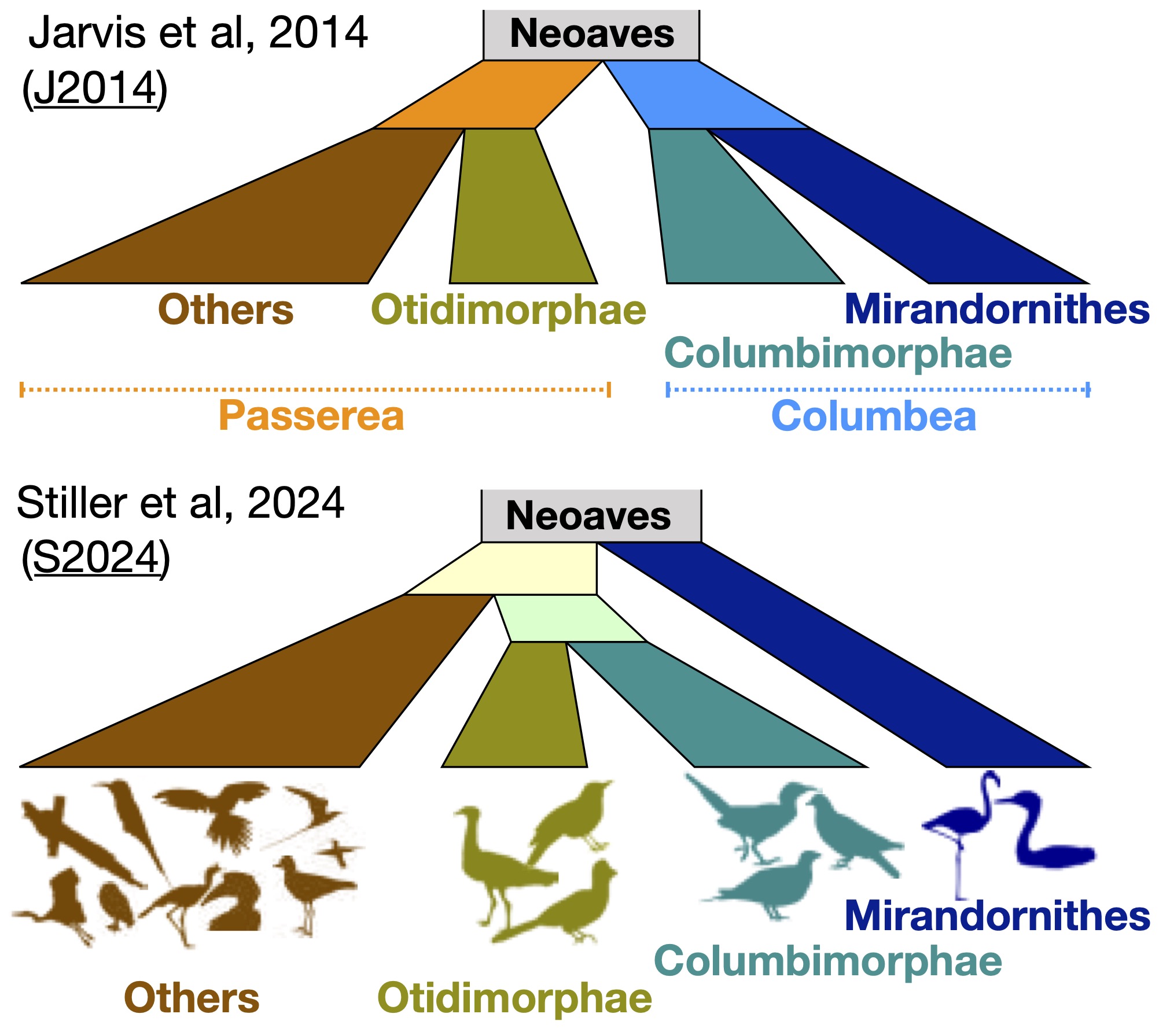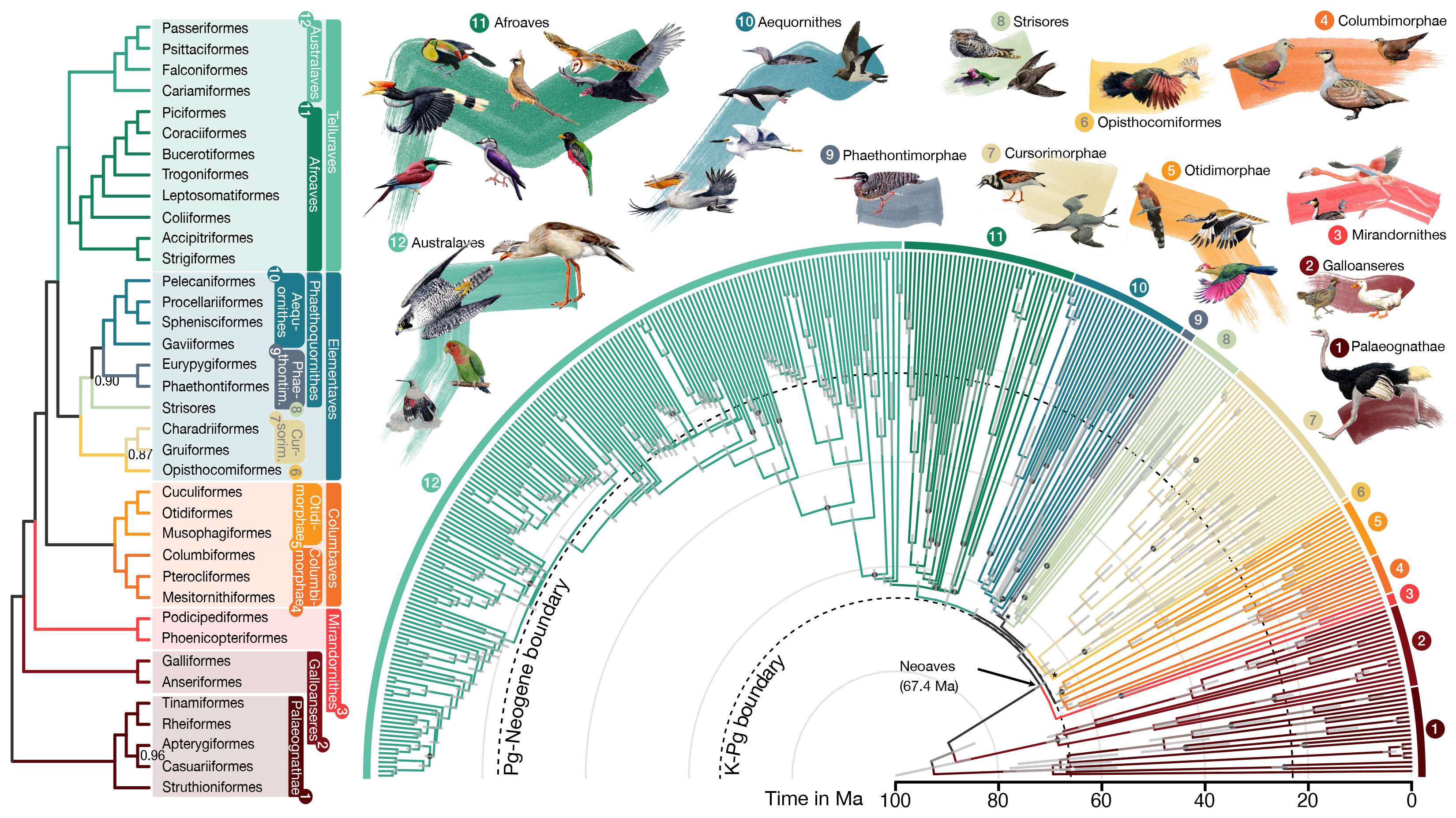We were very wrong about birds

An enormous asteroid crashed into the Earth about 65 million years ago. While terrestrial dinosaurs like the famed Tyrannosaurus rex were wiped out, many avian animals really began to flourish. Considering that there are more than 10,000 species of birds on Earth, flourish may even be an understatement. Keeping birds organized in a neat family tree is a bit of a Herculean task, since there are so many species and their evolution has been a little unclear. However, some advances in genomic sequencing and analysis are beginning to create a more lucid picture of how the planet’s living dinosaurs evolved.
In two studies published April 1 in the journals Proceedings of the National Academy of Sciences (PNAS) and Nature, scientists reveal that a genetic event about 65 million years ago has misled them about the true history of avian evolution. A section of one chromosome hasn’t mixed together with nearby DNA as it should have. This section is only tiny fraction of the bird genome, but was enough to make it difficult for scientists to build a more detailed bird family tree.
A sticky chunk of DNA
In 2014, advances in computer technology used to study genomes helped scientists piece together a family tree for the Neoaves. This group includes the majority of bird species. Using the genomes of 48 species, they split the Neoaves into two major categories. Doves and flamingos were in one group and all the other bird species belonged to the other group.
When a similar genetic analysis was repeated using 363 bird species for this new study, the team saw a different family tree emerge. This one points to four main groups and reveals that flamingos and doves are more distantly related and it all came back to a specific spot in the chromosomes.
[Related: Birds are so specialized to their homes, it shows in their bones.]
Within these two family trees, the team looked for explanations that could tell them which one was correct. They found one spot on the genome, where the genes were not as mixed together as they should have been over millions of years of sexual reproduction.
“When we looked at the individual genes and what tree they supported, all of a sudden it popped out that all the genes that support the older tree, they’re all in one spot,” a co-author of the study published in PNAS and University of Florida biologist Edward Braun said in a statement. “That’s what started the whole thing.”
Birds combine genes from a father and a mother into the next generation, but they first mix the genes they inherited from their parents when creating sperm and eggs. This process is called recombination and it is also something that occurs in humans. Recombination maximizes a species’ genetic diversity by ensuring that no two siblings are exactly the same.
One section of one chromosome did not mix with DNA nearby like it should have and has basically spent millions of years frozen in time. This chromosomal section makes up only two percent of the bird genome, but was enough to convince scientists that most birds could be grouped into two major categories–Passerera and Columbea. This new and more accurate family tree takes into account that misleading section of the avian genome and identifies four main groups of birds.

The team also found evidence that this spot on the bird chromosome has suppressed the recombination process since around the time the dinosaurs disappeared. It is not clear if the Cretaceous-tertiary Extinction that wiped out the dinosaurs and these genomic anomalies are related.
The result of this genetic suppression is that the flamingos and doves looked similar to one another in this one sticky chunk of DNA, but two groups are actually more distantly related when looking at their entire genomes. Flamingos and doves can now be considered more distantly related genetically. According to the team, this kind of stuck genetic mystery could be lurking in the genomes of other organisms.
Building a better bird family tree
The study published in Nature details an intricate chart detailing 93 million years of evolutionary relationships between 363 bird species, or about 92 percent of all bird families. This updated family tree revealed patterns in the evolutionary history of birds following the Cretaceous-tertiary Extinction.
[Related: Dinosaurs may have evolved into birds, but early flights didn’t go so well.]
The researchers noticed sharp increases in effective population size, substitution rates, and relative brain size in early birds. These evolutionary changes shed new light on the adaptive mechanisms that drove the diversification of bird species in the aftermath of this planet-altering extinction event.
To do this, they harnessed the power of a suite of computer algorithms known as ASTRAL. This program helps infer evolutionary relationships quickly and accurately and enables the team to integrate the genomic data from more than 60,000 regions in bird genomes. They then examine the evolutionary history of individual segments across the genome and pieced together several gene trees to build out a larger species tree.

“We found that our method of adding tens of thousands of genes to our analysis was actually necessary to resolve evolutionary relationships between bird species,” study co-author and University of California, San Diego computer engineer Siavash Mirarab said in a statement. “You really need all that genomic data to recover what happened in this certain period of time 65-67 million years ago with high confidence.”
These computational methods also helped the team shed light on that same particular section of one chromosome in the bird genome that has remained unchanged over millions of years and made it difficult for scientists to study these changes.
“What’s surprising is that this period of suppressed recombination could mislead the analysis,” said Braun. “And because it could mislead the analysis, it was actually detectable more than 60 million years in the future. That’s the cool part.”
In future studies, similar computer models could help reconstruct evolutionary trees for a variety of other animals. The team is hoping to continue their efforts to build a more complete picture of bird evolution. Biologists are also continuing to sequence the genomes of other bird species in an effort to expand their family tree even more.
The work is part of the international Bird 10,000 Genomes (B10K) Project, a multi-institutional effort with the goal of generating draft genome sequences for about 10,500 living bird species.










